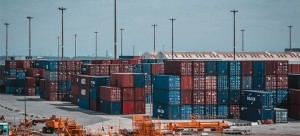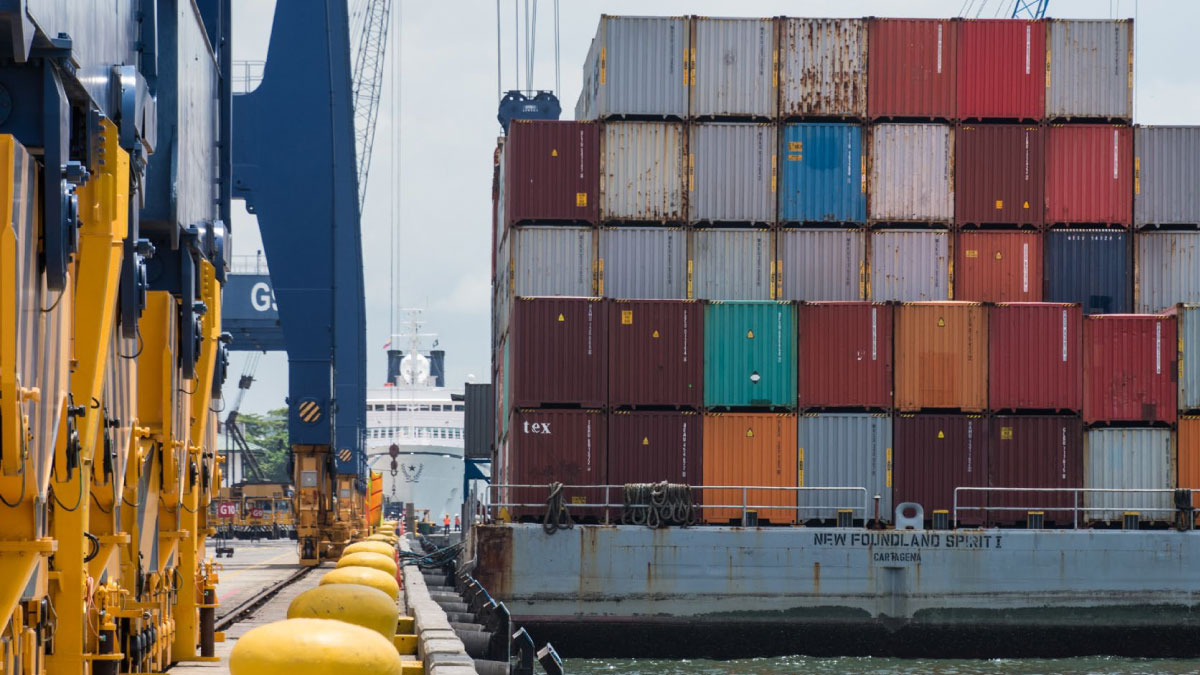Factors affecting international freight rates

Freight rates are a critical consideration for businesses involved in international shipping. These rates represent the cost of transporting goods from one location to another and are influenced by a variety of factors. These include the type of cargo, the mode of transport (such as truck, ship, rail, or air), the weight and volume of the cargo, and the distance between the origin and destination. Understanding what drives freight rates is essential for businesses looking to optimize their shipping strategies and control costs. In this article, we will explore the key factors that impact freight rates internationally and provide tips on how to manage these costs effectively.
Key Factors Affecting Freight Rates
1. Cargo Type and Mode of Transport
The nature of the cargo plays a significant role in determining freight rates. For example, perishable goods may require faster, more expensive shipping methods, such as air freight, while non-perishable items can be transported more slowly via ocean freight. Additionally, the mode of transport also influences the cost. Trucking, shipping by sea, and air freight all have different pricing structures, which are further affected by factors such as fuel costs, capacity, and speed.
- Truck Freight Rates: Truck freight rates are typically calculated per mile. These rates can fluctuate depending on fuel prices, the season, and the availability of trucks. The more miles between the starting point and the destination, the higher the shipping cost.
- Air Cargo Freight Rates: Air freight is often the most expensive option, with rates ranging from $1.50 to $4.00 per kilogram. It’s commonly used for high-value, time-sensitive products like pharmaceuticals and electronics. However, air freight rates are also influenced by factors such as fuel surcharges and the availability of flights.
- Ocean Freight Rates: Ocean freight is one of the most cost-effective options for shipping large volumes of goods over long distances. Ocean freight rates are influenced by the size of the container, the shipping route, and additional fees such as customs inspections or port delays.
2. Container Shipping Rates
Shipping containers by sea is a major component of global trade, accounting for 90% of worldwide shipments. However, container shipping rates are influenced by various factors, including the route, the volume of goods being shipped, and carrier fees. Unexpected charges, such as port delays, customs inspections, or demurrage fees, can add to the total cost. For example, shipping a 20ft container can cost anywhere between £1,000 and £5,000, depending on these variables.
3. External Factors Affecting Freight Rates
External factors beyond the control of shippers and carriers can have a significant impact on freight rates. These include economic conditions, geopolitical events, and supply chain disruptions.
- Economic Conditions;
Global economic fluctuations can directly affect freight rates. When the economy is booming, there is typically higher demand for shipping, which drives up costs. Conversely, during economic downturns, shipping rates may decrease as demand falls.
- Geopolitical Events:
Events such as trade wars, sanctions, or piracy can disrupt shipping routes and increase costs. For example, geopolitical instability in certain regions may force carriers to take longer, more secure routes, thereby increasing costs. Additionally, heightened security measures or increased insurance premiums can drive up freight rates.
- Supply Chain Disruptions:
Pandemics, natural disasters, or labor strikes can cause significant disruptions to global supply chains, leading to higher freight rates. For example, during the COVID-19 pandemic, freight rates surged due to increased demand and limited shipping capacity.
Other External Factors
- Fuel Prices: As a critical component of transportation costs, fluctuations in fuel prices directly impact freight rates.
- Currency Exchange Rates: Changes in exchange rates can affect the cost of international shipping, impacting importers and exporters.
- Labor Shortages: A shortage of truck drivers, port workers, and other transportation personnel can lead to capacity constraints and higher freight rates.
- Distance range; The range between pick up point and delivery point is also one of the factors affecting freight rates. Freight charges are affected by the delivery’s geographic location, mode of conveyance, capacity, and complexity.
- Consignment volume; Freight rate is affected by volume and thickness. The more space and labor required to carry your goods, whether by land, air, or sea, the more you’ll have to pay.
These external factors create a dynamic and challenging environment for shippers and carriers, requiring continuous monitoring and adaptation to mitigate risks and optimize freight costs.
4. Economic factors affecting freight rates
- General rate increase; This is an additional fee applied by shipping companies during peak seasons. The carriers have complete control over which routes the GRI affects and by how much.
- Transportation expenses; Transportation expenses also contribute to factors affecting freight rates. This occurs when there is an increase in wages for the truck drivers. Recruitment process for the truck drivers is also a cost factor affecting freight rates.
Managing Freight Costs During Peak Periods
Freight costs often spike during certain times of the year, such as holidays or peak seasons. For example, the Chinese New Year and the National Day Golden Week in China cause significant disruptions in global shipping. During these periods, there is a surge in shipments, leading to increased demand and higher rates. Shippers should plan ahead, book early, and consider alternate routes to avoid paying premium rates.
Practical Tips to Minimize Freight Costs
Managing freight costs requires strategic planning and the ability to adapt to changing conditions. Here are some tips to help businesses reduce shipping expenses:
- Work with a 3PL: Partnering with a third-party logistics provider (3PL) can help optimize shipping routes, reduce costs, and improve efficiency. 3PLs have access to industry knowledge and technology that can streamline operations and identify cost-saving opportunities.
- Plan Shipments in Advance: Anticipating peak seasons or disruptions and booking shipments well in advance can help avoid last-minute price surges. Consider using alternate shipping routes or modes of transport to reduce costs during high-demand periods.
- Leverage Technology: Use freight management software to track shipping costs, monitor rate fluctuations, and optimize routes. This can help businesses stay on top of changing rates and make informed decisions about their shipping strategies.
Freight rates are a complex interplay of economic, market, external, and operational factors. Understanding these variables is crucial for businesses to effectively manage their supply chain costs. By carefully analyzing factors affecting freight rates such as supply and demand, fuel prices, geopolitical events, and cargo characteristics, stakeholders can make informed decisions to mitigate risks and optimize freight expenses.
FAQS
- What are the factors affecting international freight rates the most?
The most significant factors include the type of cargo, the mode of transport, the distance to the destination, and external economic conditions such as fuel prices or geopolitical events. - How do economic conditions affect freight costs?
When the economy is strong, higher demand for goods leads to increased shipping costs. Conversely, during economic downturns, reduced demand can lead to lower freight rates. - What are the differences between ocean and air freight pricing?
Ocean freight is generally cheaper for shipping large volumes of goods over long distances. Air freight, on the other hand, is more expensive but is used for high-value or time-sensitive shipments. - How much do the majority of trucking companies charge per mile?
According to the National Private Truck Council, the average trucking cost per mile for private fleets in the United States is $2.90.
- What should I charge to transport freight?
The following are the current rates for the most common types of freight trucks: Van charges range from $2.30 to $2.86 per mile on average. Reefer rates are currently average $3.19 per mile, with the Northeast having the lowest rates at $2.47 per mile. The average flatbed charge is $3.14 per mile.
- How do you determine Factors affecting freight rates truckload?
The cost of trucking is determined per mile. To begin, calculate the distance between the beginning and ending points. To determine your trucker freight rate, split the full charge by the number of miles between destinations.
- What causes China’s freight rates to be so high?
China reopened its economy faster than the US and Europe when the world went under global lockdown in response to COVID-19. On the other hand, China could not send manufactured goods because the shipping containers required were stranded in those two places. This led to a shipping container shortage for China. Factors that affect freight rates
- What are the rates for independent truckers per mile? Theory of Freight rates.
Total driving labor expense per mile industry figures range from $0.49 to $0.83 ($0.67 per mile on average).
Please contact us at:
TELEPHONE NUMBER: +1(800)-413-2452
FAX: +1(800)-413-5461
EMAIL: anthony@ameritransfreight.com.
For all your freight rates needs.
Ameritrans is fast, reliable, and efficient.

